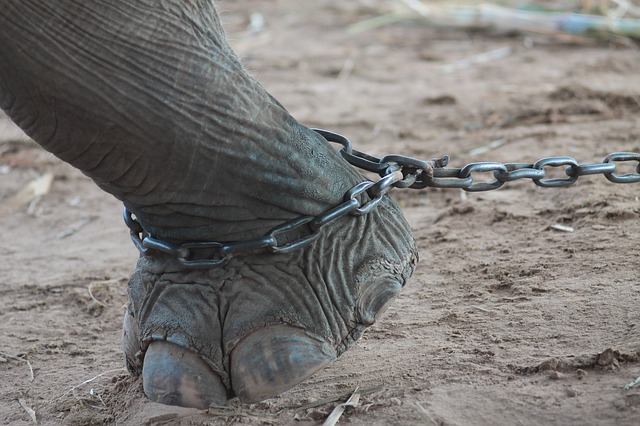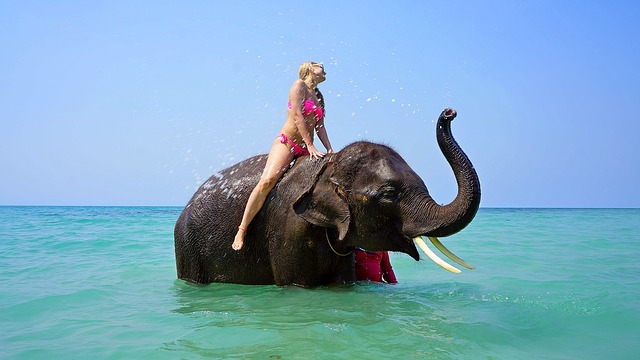
Elephant tourism is a main attraction in Thailand. Many tourists flock to this country to experience elephant rides and witness elephant shows for a once-in-a-lifetime experience. But it didn’t take too long before people discovered the unethical side of elephant tourism.
The majestic animals were kept in cages; feet shackled and bodies ridden with scars as a result of phajaan, a cruel process where the elephants are tamed through the use of restriction and physical punishment. This has led to many animal welfare activists condemning elephant rides in the hopes of promoting a more ethical way of interacting with the animals.
In Thailand, you’ll come across plenty of elephant sanctuaries that act as a safe haven for rescued elephants. And while most of them are genuine with their intentions, others conceal themselves as elephant sanctuaries to attract more tourist visits. Not every elephant sanctuary in Thailand nurtures the health and well-being of their elephants.
As a responsible tourist, it’s crucial for you to discern the real elephant sanctuaries from the fake ones.
Here are some tips you can follow to ensure that the elephant sanctuary you’re visiting is actually ethical.
Real Elephant Sanctuaries Will Limit Tourist Contact with the Animals

It can be fun to bathe elephants, feed them, and go on nature walks with them. After all, we love to admire the beauty of these creatures up-close and personal. But real elephant sanctuaries don’t promote tons of human interaction with elephants. Too much human activity near the elephants can cause stress to the animals and disrupt their natural habitats. At most, ethical elephant sanctuaries will allow tourists to observe them from a safe distance.
If an elephant sanctuary offers you to paint, ride, or participate in any activity that shows unnatural behavior, avoid them at all costs. They’re most likely tourist traps and operate only for their benefit and not the elephants themselves.
Elephants Are Cared for in a Semi Wildlife-like Environment

Many rescued elephants spend their entire lives in semi-captivity because they cannot fend for themselves in the wild anymore. Ethical elephant sanctuaries care for these vulnerable animals in an environment that resembles their natural habitat. This means plenty of open space and an abundance of grass for the elephants to feed on. The elephants are free to roam around without being tied down or constrained in a cage.
Genuine elephant sanctuaries are actually the best places for captive elephants. Many areas in Thailand no longer have sufficient land where the elephants can be released back into the wild. Instead of being left vulnerable in the wild, elephants are nurtured and cared for in a similar environment that allows them to enjoy their senior lives as much as possible. It’s pretty easy to spot a fraud elephant sanctuary just by looking at the place.
When visiting an elephant sanctuary, take a tour around and see how the elephants are kept. If you see any shackles, cages, and a lack of open space for the animals, it’s most likely a tourist trap and one you should definitely avoid contributing to.
Gather As Much Information As You Can on Elephant Tourism

With so many elephant sanctuaries popping up in Thailand, it can be quite confusing to differentiate the real ones from the fakes. But if you do your own research, you can actually learn a lot about the sanctuaries before you even visit them.
Read reviews from other tourists. Give the sanctuary a call and ask them about how they operate. The more information you acquire, the easier it’ll be for you to know if the sanctuary is actually an ethical one.
Photos and videos from the elephant sanctuary can be good indicators. Many tourists will share their experiences on social media and it only takes a few seconds to search the sanctuary before the photos come up. If you’ve booked a tour with an agent or tour operator, don’t hesitate to raise your concerns. Some travelers are unaware that the elephant sanctuary they’re visiting is actually an unethical one because they didn’t ask enough questions.
Meeting other travelers and asking them for feedback on their elephant sanctuary experiences can also help you narrow down your choices. Word of mouth is a very powerful tool and you’ll know an elephant sanctuary is genuine when the tourists speak for it themselves.
Doing Your Part Helps
Nowadays, plenty of organizations in Thailand are claiming to be sanctuaries. Which ones are okay for tourists to visit? Which ones deserve your voluntary contributions?
Doing your part in promoting ethical elephant tourism can go a long way towards helping others identify fraud elephant sanctuaries. Before visiting an elephant sanctuary, take these tips into consideration to know if the sanctuary is actually ethical.




3 Comments